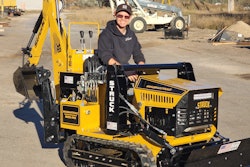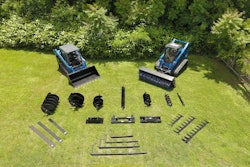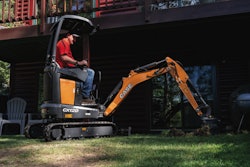
Landscape businesses do not have unlimited financial capital to automate their entire companies, and even if capital is not an issue, technology may not be the solution to every problem.
Is investing in technology the best use of resources? The question becomes not if we are going to advance our technology, but where do we start, what do we invest in and how do we choose.
Starting at the top: Do you have a tech-friendly culture?
When thinking about a technology strategy, tone from the top matters. Creating a culture that embraces technology comes from the top down.
Executive and management teams need to embrace change and a level of discomfort. Technology is foreign to some people, but just as with other new experiences, positive reinforcement will help people to accept new technology.
At the same time, accepting change requires patience. Software is typically user-friendly, but not always easy to learn. Not everyone learns or looks at things the same way. The organization has to embrace the new technology and have realistic expectations for implementation.
With the right culture, even a challenging implementation will be successful. It will make everyone on your team more willing to support change.
What technology should you invest in? What do you need and why? What software and hardware do you currently have? Start by asking questions and collecting information from your employees. It may surprise you that some employees might know what they need.
They may also be aware of where the problems lie, but not necessarily know how to solve them. Ask your employees about programs or technology that they know of or that interest them. Collect data from surveys, create a committee to collect information and hold one-on-one conversations with end users.
Feedback and collaboration will not only help you identify needs but also create buy-in from the beginning. The more buy-in, the easier it will be to implement and fully adopt the new technology.
Map out processes to find the bottlenecks. Ask your employees where they get bogged down and frustrated. Employees can help identify the trees, but they can’t always see the forest.
Mapping out the processing and looking at a visual representation can help determine the location of your pain points. These are the opportunities for improvement. Examine all your departments: sales, customer service, purchasing, accounting, operations and human resources. Listen to your customers, employees and vendors. What tasks create bottlenecks in your system?
Once you have a general idea of what you need, determine if these issues are solvable through technology. You could use a consultant to help you or have someone perform the research. This exercise will help to narrow down what needs technology may solve. Identify your needs and rank them in order of importance, taking into account scalability and integration.
Now consider the impact on your systems if your company doubles in size. Are they scalable? Technology enables you to grow your business, minimizing additional costs like headcount. Identified needs that are not scalable can move to the bottom of your technology list.
Now that you have a list of issues that technology will address, make a technology roadmap that identifies all the different pieces of business software and how they will integrate with each other. Your new software or hardware will work most efficiently when it integrates with your existing software. This free flow of information should be seamless in order to harness the most efficiency.
Next, put together a budget. Don’t forget to include the ongoing cost and the implementation cost. There are also hardware and software costs. Training and costs for hardware peripherals should include all the supplements for functionality, plug-ins and extension packs for enhancing software. You might also need additional furniture or equipment.
Start your technology plan at the top, embracing a new tech culture and accepting change. Giving everyone in the organization the opportunity to offer their input will create excitement and buy-in.
Identify all the areas that technology can streamline. Rank the opportunities with scalability and integration in mind. Then select the top-ranked item to start.
Along the way, you will put together your technology strategic plan by developing a map of all your processes. On the map, you will identify all your opportunities for improvement through a technology solution.
From this, you can develop your technology roadmap, showing how all your different pieces of software will integrate with each other. All that’s left is buying, training and implementation.
EDITOR’S NOTE: Libby Antognoli is the CFO for Landscape Services. She has her master’s degree in finance and accounting and over 10 years of experience in the construction/landscape industry.











